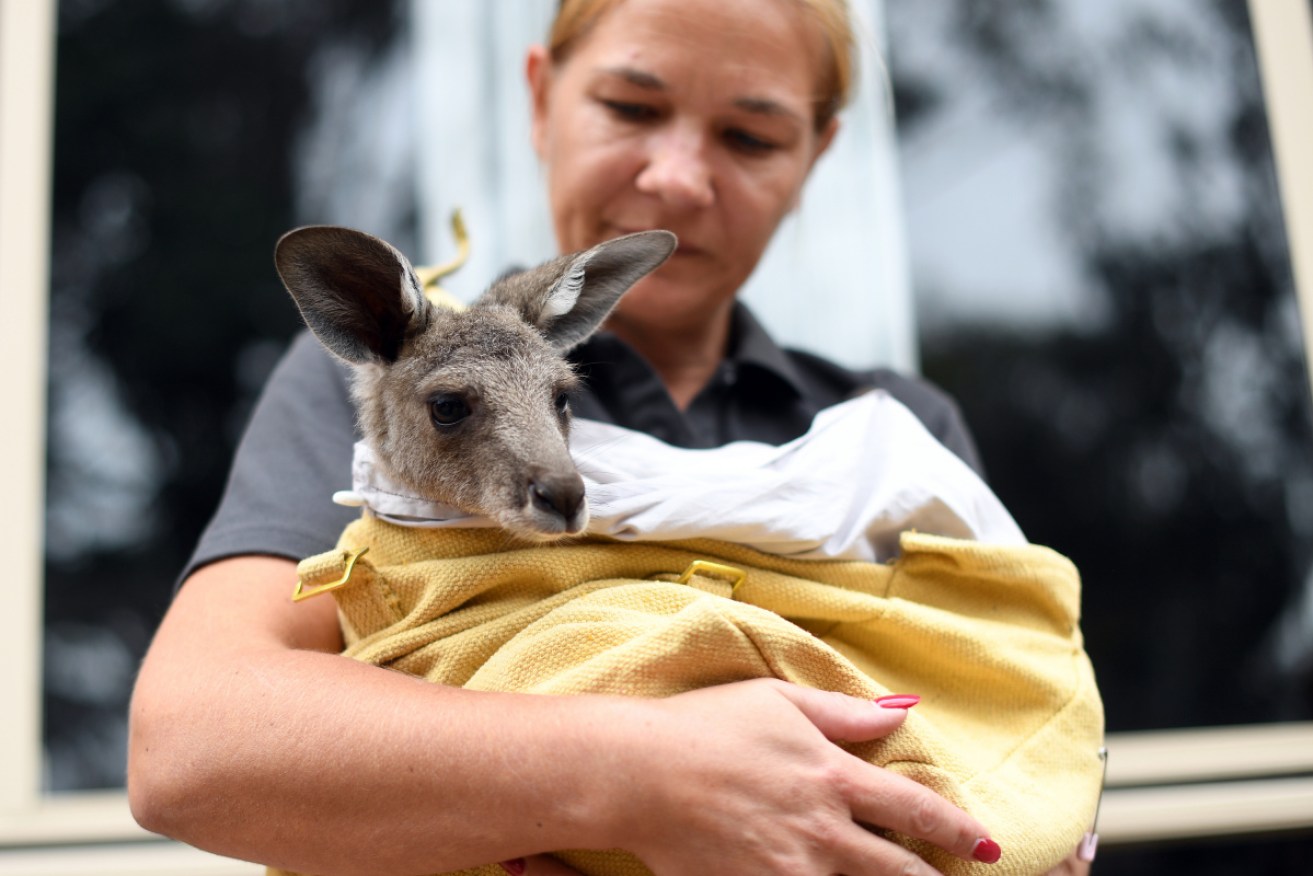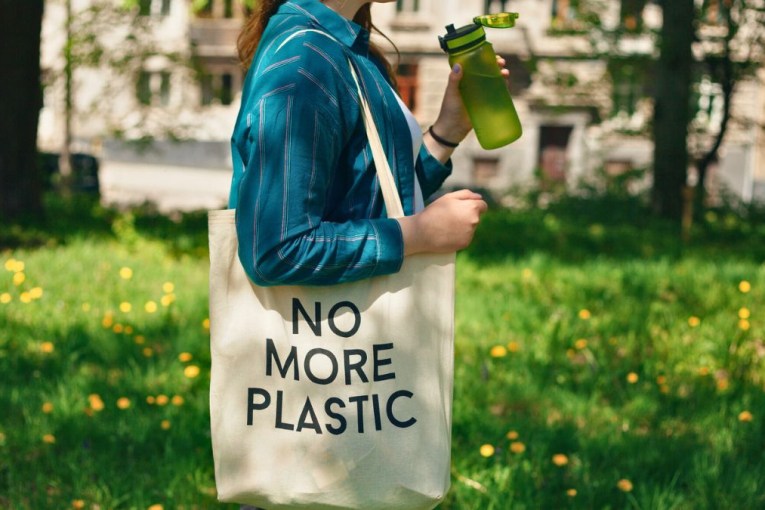‘A disastrous situation’: Australia’s bushfire crisis may push species to extinction


Wildlife rescuers across the nation are rallying to help animals affected by bushfires. Photo: Getty
Australia’s ferocious bushfires have taken a devastating toll on wildlife, with an estimated 1.25 billion killed and experts now warning that some species may be pushed to extinction.
That number is certain to grow as injured animals are euthanised and survivors likely to suffer from food shortages as a result of the destruction of 10 million hectares of bush habitat.
But rescuers are now warning Good Samaritans to think twice about how they help animals on the ground. They fear feeding methods could be doing more harm than good.
Videos of cyclists pouring water down the throats of thirsty koalas have gone viral, the scenes tugging at heartstrings world wide and helping to shine a light on the animals’ plight.
But this well-meaning gesture may actually be deadly.

Koala populations have been decimated. Photo: Humane Society International
It comes as veterinarians and volunteers are desperately trying to get into fire grounds, while state governments have even taken the extraordinary step of dropping carrots from planes.
Their mission is urgent: On Thursday experts wrote to environment minister Sussan Ley expressing fears for at least 13 wildlife species, while a leaked report revealed that some species were likely to already be extinct.
On Monday, the Morrison government pledged $50 million to animal rescue and protection efforts.
The Wilderness Society’s Suzanne Milthorpe described the funding as “a good start” as an “initial investment”, but stressed that “much more will be needed to recover wildlife and the habitat critical for their survival”.

Wildlife rescuers searched “apocalyptic” terrain on Kangaroo Island, but found few survivors. Photo: HSI
While it is “impossible to know the extent of the devastation” until the fires are under control, it is clear that long-term recovery will require unprecedented levels of government funding, she said.
The bushfires have brought Australia’s “appalling record as a global leader in extinction to the world’s attention”, Ms Milthorpe said.
We cannot return to business as usual given the widespread and profound impact that these fires will have on the natural places that support our communities and wildlife.”
“It’s a disastrous situation,” Wildlife Victoria chief executive Megan Davidson told The New Daily.
It is clear that many of the nation’s most vulnerable native animals have been “very badly impacted”, she said.
“These fires are incredibly intense and fast-moving, so most animals (birds, mammals and reptiles) will be killed in the fires,” Dr Davidson explained.
“There will be another group who managed to flee – and might have emerged from underground too early – who will be injured. The first priority is to find those animals and humanely euthanise them.”
Humane Society International (HSI) recently deployed a disaster response team to Kangaroo Island to search for wildlife survivors.

Kangaroo Island was home to one of the nation’s last healthy koala populations. Photo: HSI
More than a third of the South Australian island described as ‘Australia’s Galapagos’, which was home to one of the nation’s last healthy koala populations, has been razed by fires.
“The land we’re searching is utterly scorched with charred animal bodies everywhere,” HSI Australia chief executive Erica Martin said.
It is very confronting to see the extent of the loss of wildlife.
“At one area, which was badly burned a week ago, the scenes were nothing short of apocalyptic…we only found one living koala amongst thousands of bodies of koalas, kangaroos, wallabies and birds.”
However, it is still too dangerous for wildlife rescuers to access many of the nation’s worst-hit areas.
“Where we expect to see animals being brought in for rehabilitation is on the fringes of the fire-ground,” Dr Davidson said.
“The fire-grounds are very dangerous places, so there are a lot of restrictions going on there at the moment.”
Habitat loss a killer
Once the fires are out, animals will be at high risk of starvation due to habitat loss, and of being killed by predators including feral cats.
“The habitat’s gone, the food is gone. So the negative impacts will go on for many many weeks if not months,” Dr Davidson said.
“Bush does regenerate, grass does regrow, but whether the landscape will fully recover given the climate is now drier and hotter, we don’t know.”

Native animals will remain vulnerable long after the fires finish. Photo: Getty
University of Melbourne ecologist Alan York warned that the future would be grim for Australia’s iconic native animals unless more is done to mitigate the effects of climate change, prevent habitat destruction and protect vulnerable wildlife.
“The scale and magnitude of these fires is consistent with predictions derived from climate change modelling and we can expect to see more frequent, severe and extensive fires in the future,” Professor York said.
“This will increase the risk of extinction among certain species.”

Habitat isolation and loss is fuelling the decline of many species. Photo: Getty
The decline of local populations of rare species due to habitat isolation and loss coupled with increased frequency and ferocity of “extreme environmental events” such as bushfires “does not bode well for the future”, Professor York said.
“It means the long-term survival of our iconic wildlife is likely to require greater levels of human intervention to protect and foster vulnerable populations,” he said.
“While we hear frequent calls for greater firefighting resources, we will also need more resources for monitoring and safeguarding the well-being of our unique animals.”
How to help, and what not to do
Social media has been awash with photos and videos of animals suffering from injuries, heat and thirst.
Videos of Good Samaritans pouring water down the throats of thirsty koalas have gone viral, but this well-meaning gesture is not in the animals’ best interests, experts have warned.
According to one Frankston Animal Shelter, you can kill a koala by pouring water from a bottle – as they don’t drink like that, if at all. Some have even died from water on the lungs. Makes you wonder what happened to all those koalas in the viral videos. 🐨😢 pic.twitter.com/h41dp0wz23
— Andy Park (@andy_park) January 11, 2020
“When you offer water, offer it in a container so that an animal can drink naturally,” Dr Davidson said.
“If the animal’s head is pointed up and you’re pouring down there is the risk of pouring water into the lungs. Even pouring water into cupped hands is preferable.”

The NPWS delivered carrots and sweet potatoes to brush-tailed rock-wallabies. Photo: NSW DPIE
In New South Wales, the National Parks and Wildlife Service (NPWS) took to the skies in an attempt to get food to native brush-tailed rock-wallabies in bushfire-ravaged regions.
An endangered species, brush-tailed rock-wallaby numbers had already declined dramatically due to habitat loss prior to this fire season.
Operation Rock Wallaby 🦘- #NPWS staff today dropped thousands of kgs of food (Mostly sweet potato and carrots) for our Brush-tailed Rock-wallaby colonies across NSW 🥕🥕 #bushfires pic.twitter.com/ZBN0MSLZei
— Matt Kean MP (@Matt_KeanMP) January 11, 2020
However, Dr Davidson warned the general public against leaving the wrong food out for wildlife.
Feeding “has to be done incredibly carefully to avoid doing more harm than good,” she said.
You can do harm by putting food out that attracts not only the animals that you want to see, but their predators. It has to be done in a systematic way.
“There is a place for support feeding until the natural food sources recover, but it has to be done really carefully.”
Instead, the best way to help wildlife is by leaving large, shallow containers of water outside. Include sticks and leaves in the water to give insects a place to land.
Once the weather’s hot everything needs water. You can save a lot of lives just by having a birdbath in your back garden,” Dr Davidson said.
Flying foxes are “long-distance pollinators and forest builders” that will play an important role in the recovery of bushland and forests post-bushfires. However, species such as the grey-headed flying fox have been left vulnerable by deforestation and climate change.
“We have had a catastrophic year for that species. They have died in their tens of thousands from drought and starvation,” Dr Davidson said.
“We’ve had big events where mothers have abandoned their babies, and we’ve had extreme heat days.”
One way to help flying foxes is by removing unsafe nets from fruit trees which ensnare flying foxes and prevent them from accessing a lifesaving food source.
“It’s a disaster because these products are cheap and nasty and trap and kill animals,” Dr Davidson said.
“Any net that you can poke a finger through will trap animals. People don’t know and they put them on their trees.”








